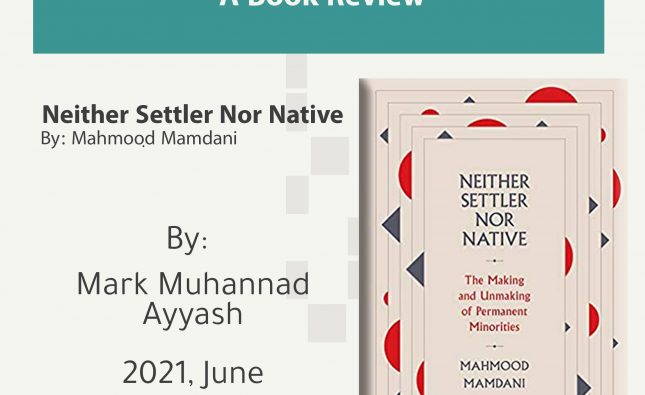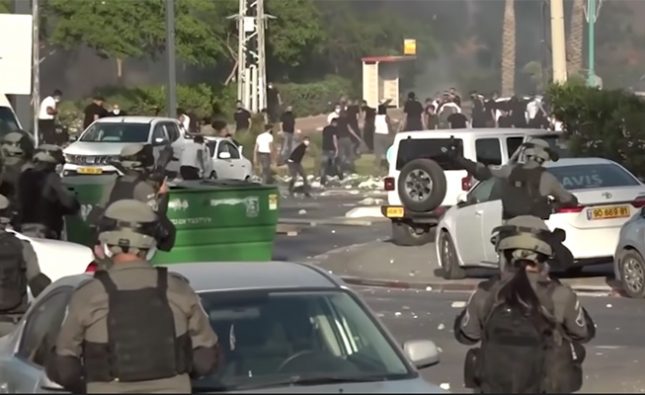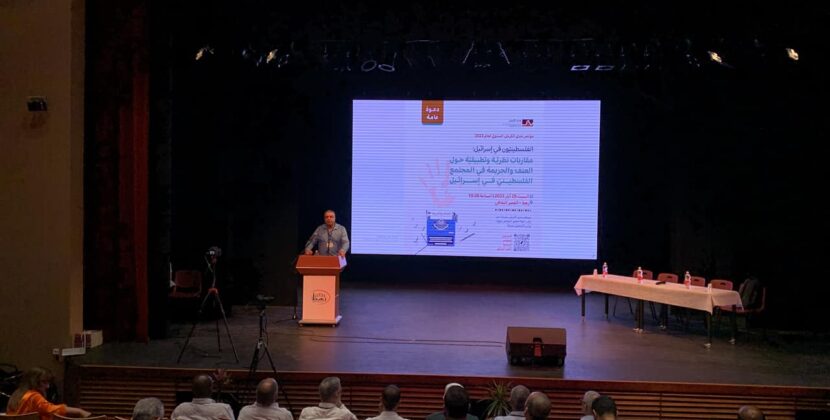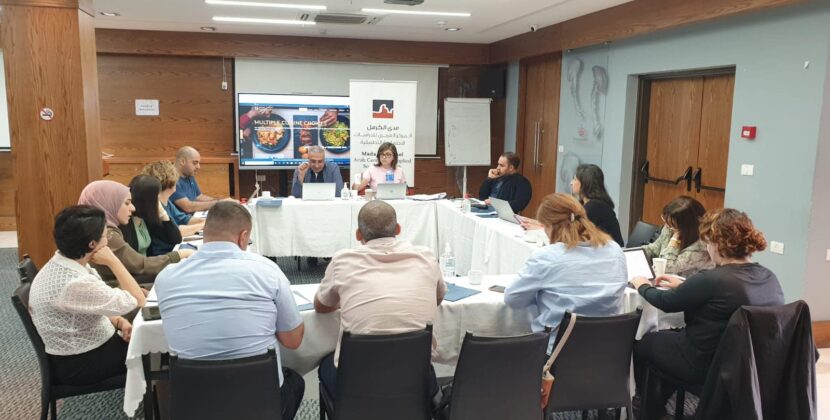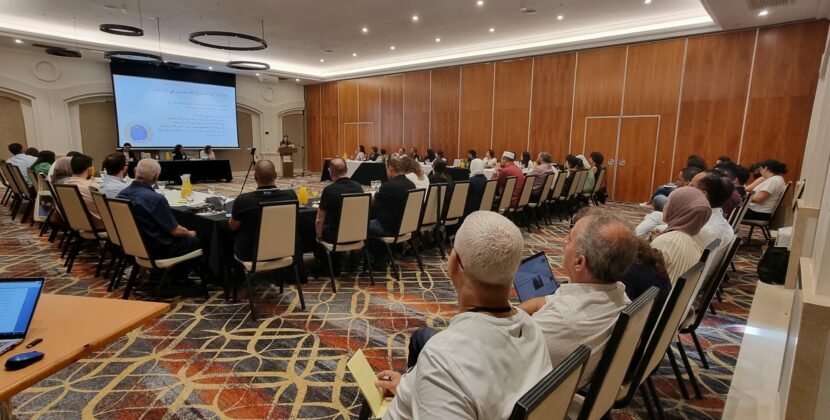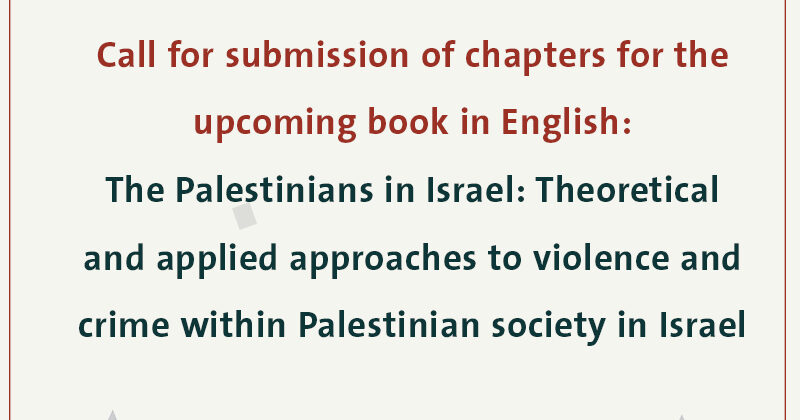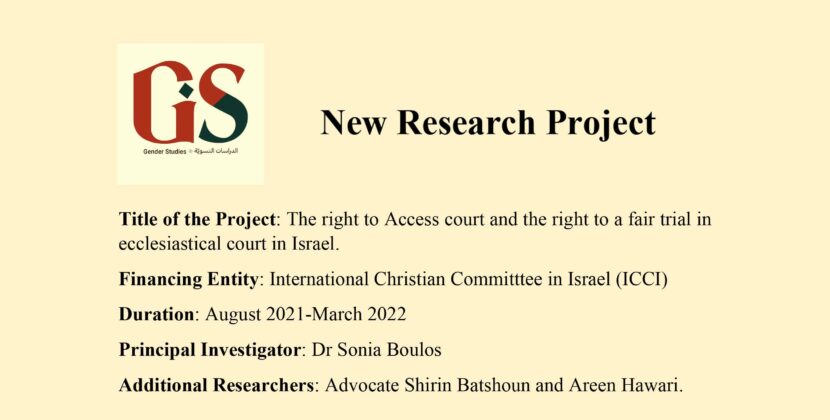Mada al-Carmel Center issued an extra issue of the Jadal electronic magazine, edited by Muhanad Mustafa and Areen Hawari. This issue (27-28) of Jadal deals with the Palestinian city and its cultural, political, social and urban transformation, in the context of Israeli colonial settlement structure inside the Green Line and in the territories occupied in 1967, and in the framework of the Arab Palestinian social structure. The articles address the general level of transformations of the Palestinian city, with case studies of Palestinian cities/ residential areas, such as Haifa, Nazareth, Um el-Fahem and Ramallah. They raise several aspects of the issues relating to the Palestinian city, most importantly, the cognitive-epistemological aspect. This current issue features a large collection of articles divided into two sections: The first deals with a general analysis of the social, cultural and urban reality of the Palestinian city, and includes four articles. The second section deals with case studies of Palestinian cities/residential areas: Um el-Fahem, Haifa, Nazareth and Ramallah.
In the first section, Dr. Musallam Mahameed deals with a situation he calls the “Villacity” in the Palestinian communities inside the Green Line. The article tries to analyze everyday social behaviors stemming from this “Villacity” created by Israeli colonialism and complied with by the social strata, which is to drop the favorable aspects of the village without connecting with those of the city, and maintain the negative aspects of the village without repelling those of the city.
analyze everyday social behaviors stemming from this “Villacity” created by Israeli colonialism and complied with by the social strata, which is to drop the favorable aspects of the village without connecting with those of the city, and maintain the negative aspects of the village without repelling those of the city.
 In his article, Professor Rasim Khamaisi addresses the urban planning transformations in the Palestinian residential areas, after the severing of the urbanization process, the city that evolved in Palestine and the Nakba of the Arab city in 1948. He suggests a critical view of the polarity of the city/village, and points out that “following resumption of development of the city, we are required to avoid continuing to stagger between the rural and urban, and produce concepts that critically read the reality of our cities and prepare for the future without copying and simulation.”
In his article, Professor Rasim Khamaisi addresses the urban planning transformations in the Palestinian residential areas, after the severing of the urbanization process, the city that evolved in Palestine and the Nakba of the Arab city in 1948. He suggests a critical view of the polarity of the city/village, and points out that “following resumption of development of the city, we are required to avoid continuing to stagger between the rural and urban, and produce concepts that critically read the reality of our cities and prepare for the future without copying and simulation.”
Within the general articles, which discuss the social aspect, Dr. Ibrahim Mahajneh analyzes in his article the issue of social solidarity in the Palestinian city, through the so-called “social urbanism,” assuming that “the Palestinian cities established under Israeli colonialism” suffer from “partial” and “strained” social urbanization. Mahajneh believes that the informal social solidarity system in these cities, is a relief solidarity in the form of grants and aid, but despite its inadequacy and irregularity as it is seasonal, works as an important safety net for the benefit of poor families.
so-called “social urbanism,” assuming that “the Palestinian cities established under Israeli colonialism” suffer from “partial” and “strained” social urbanization. Mahajneh believes that the informal social solidarity system in these cities, is a relief solidarity in the form of grants and aid, but despite its inadequacy and irregularity as it is seasonal, works as an important safety net for the benefit of poor families.
 In the same context, the researcher Lubabah Sabri, presents the cultural structure of the Palestinian city, stressing that the “social and cultural infrastructure in the Palestinian city has not changed.” Under the Israeli governments this emerging bourgeoisie structure acquired the political and social discourse and cultural production, protecting its privileges; to be the economic, political, intellectual and social decision maker.
In the same context, the researcher Lubabah Sabri, presents the cultural structure of the Palestinian city, stressing that the “social and cultural infrastructure in the Palestinian city has not changed.” Under the Israeli governments this emerging bourgeoisie structure acquired the political and social discourse and cultural production, protecting its privileges; to be the economic, political, intellectual and social decision maker.
The second part of the issue is opened by Dr. Ahmad Eghbarieh analyzing the urban – cultural reality of the city of Um el-Fahem, noting two factors that contributed to  the formation of the cultural, political and social urban infrastructure in the city, namely political Islam and Israeli colonialism. He directs severe criticism of the development of the city to become “isolated from its close history and distant real heritage, living a spiritually confused mood between the terrestrial and celestial, or between the secular and religious, not to mention the daily colonial practices which emptied the concept of “citizenship” of its content, and dismisses simple dependence on it in a future reality. For the reasons given in combination, this city does not produce knowledge about itself, as it does not live a normal situation, but the bulk of what is produced is chanting consumed religious slogans, or extoling national repugnant mantras.
the formation of the cultural, political and social urban infrastructure in the city, namely political Islam and Israeli colonialism. He directs severe criticism of the development of the city to become “isolated from its close history and distant real heritage, living a spiritually confused mood between the terrestrial and celestial, or between the secular and religious, not to mention the daily colonial practices which emptied the concept of “citizenship” of its content, and dismisses simple dependence on it in a future reality. For the reasons given in combination, this city does not produce knowledge about itself, as it does not live a normal situation, but the bulk of what is produced is chanting consumed religious slogans, or extoling national repugnant mantras.
 Dr. Nadeem Karkabi deals with the cultural situation in the city of Haifa. He observes the cultural transformations in it since its emergence as a global city embracing the middle class culture in the 1930s, through the Nakba till today. Karkabi deals with some of the associated ideas of Haifa as the capital of Arab culture inside Israel, which is consistent with the desire to restore the Palestinian city lost since the Nakba. He believes that the Palestinian social class which owns the economic luxury in Haifa and other cities seeks to reproduce and redefine the Palestinian civilian areas, on a cultural and not economic basis. He also points to the emergence and development of civil society institutions and initiatives, such as Palestinian non-governmental organizations, which, through their activities have attracted an audience and artists from outside the city.
Dr. Nadeem Karkabi deals with the cultural situation in the city of Haifa. He observes the cultural transformations in it since its emergence as a global city embracing the middle class culture in the 1930s, through the Nakba till today. Karkabi deals with some of the associated ideas of Haifa as the capital of Arab culture inside Israel, which is consistent with the desire to restore the Palestinian city lost since the Nakba. He believes that the Palestinian social class which owns the economic luxury in Haifa and other cities seeks to reproduce and redefine the Palestinian civilian areas, on a cultural and not economic basis. He also points to the emergence and development of civil society institutions and initiatives, such as Palestinian non-governmental organizations, which, through their activities have attracted an audience and artists from outside the city.
The researcher Nisreen Mazzawi deals with the city of Nazareth in the framework of the “cultural and structural changes in the urban realm of Nazareth.” She presents the urban transformations in the city in the broad sense of urbanization and its economic, cultural and social implications, and city’s future destination. In this respect, she states that the “cultural changes in the urban realm of Nazareth, in addition to the changes in lifestyles and their impact on identity, contains the issue and its opposite; the presence of the first sustains the presence of the second. A special network of deep, composite and contrasting relations combines the city’s residents in moderate consistency and harmony. Together they constitute a mosaic that reflects key elements in the life of the Palestinians in Israel.”
the urban transformations in the city in the broad sense of urbanization and its economic, cultural and social implications, and city’s future destination. In this respect, she states that the “cultural changes in the urban realm of Nazareth, in addition to the changes in lifestyles and their impact on identity, contains the issue and its opposite; the presence of the first sustains the presence of the second. A special network of deep, composite and contrasting relations combines the city’s residents in moderate consistency and harmony. Together they constitute a mosaic that reflects key elements in the life of the Palestinians in Israel.”
 The second part of this issue has two articles about the transformations in the city of Ramallah, especially after the Oslo Accords and the establishment of the Palestinian Authority. Dr. Jamil Hilal tries to understand the transformations in the city and its future destination following the changes that took place and continue to occur after the Oslo agreement, noting that the “biggest challenge for the city is combining between being a pluralistic, open and creative city, engaging with the racial colonial settlement system, and realizing that the greedy values of capitalism are incompatible with the values of freedom based on equality, solidarity and justice.”
The second part of this issue has two articles about the transformations in the city of Ramallah, especially after the Oslo Accords and the establishment of the Palestinian Authority. Dr. Jamil Hilal tries to understand the transformations in the city and its future destination following the changes that took place and continue to occur after the Oslo agreement, noting that the “biggest challenge for the city is combining between being a pluralistic, open and creative city, engaging with the racial colonial settlement system, and realizing that the greedy values of capitalism are incompatible with the values of freedom based on equality, solidarity and justice.”
In the same regard, the Palestinian researcher Lawziyeh Bazar presents a historical sociological reading of the transformations that took place in the city of Ramallah  till this day. She confirms that “Ramallah wasn’t –the Oslo city– despite the importance of the developments that followed Oslo and the return of the Palestinian Authority from abroad. The centrality of Ramallah came gradually as an urban place emerging since the Ottoman rule, expanding during the British Mandate, to be reengineered during the period of Jordanian rule, and continued later to become in its current form.”
till this day. She confirms that “Ramallah wasn’t –the Oslo city– despite the importance of the developments that followed Oslo and the return of the Palestinian Authority from abroad. The centrality of Ramallah came gradually as an urban place emerging since the Ottoman rule, expanding during the British Mandate, to be reengineered during the period of Jordanian rule, and continued later to become in its current form.”





